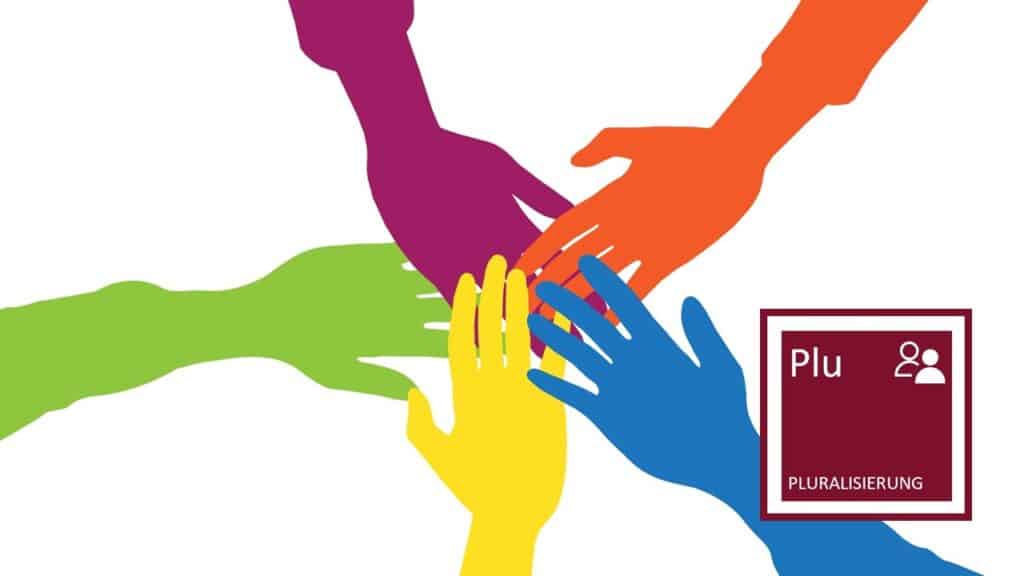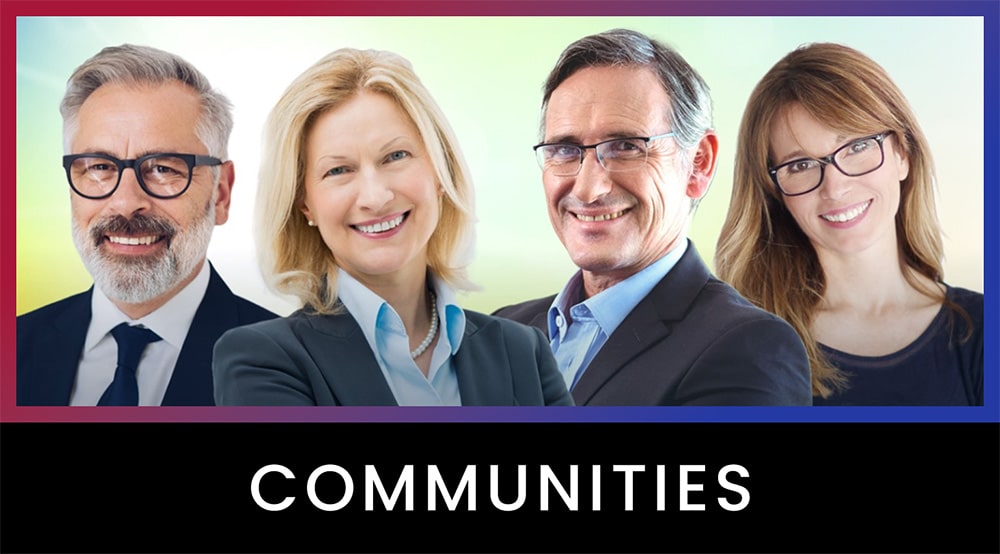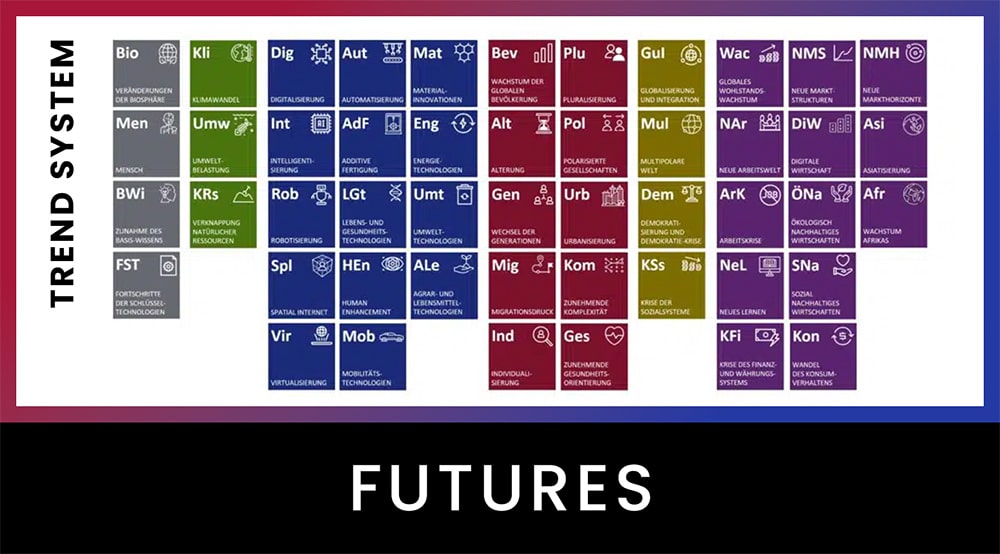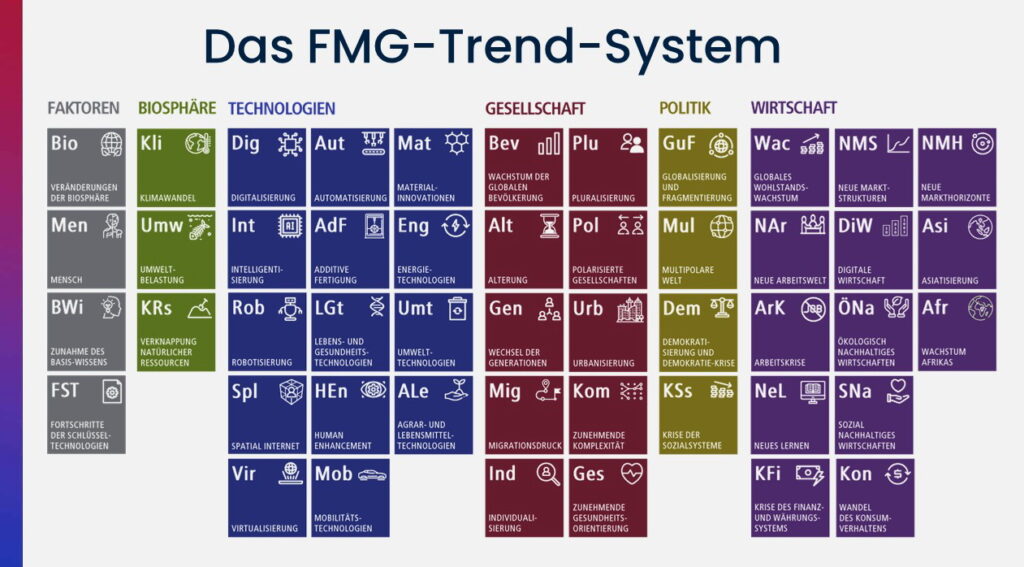Pluralization megatrend
From the FMG Trend System: For your future-proof company
Megatrend pluralization of society
Our society is becoming increasingly diverse – in terms of lifestyles, role models, family forms and cultural backgrounds. The megatrend of pluralization describes the profound change towards an increasingly differentiated social reality. Traditional norms and outdated role models are losing influence. Instead, individuality, self-determination and participation are gaining in importance as new guiding values.
This trend affects almost all areas of life: Living, working, consumption, education, media and politics. Companies are faced with the challenge of responding to increasing diversity with suitable products, services, management cultures and working models. Those who better understand the diversity of society can not only accept it, but actively shape it and use it to their economic advantage. To the overview of all megatrends

What does the pluralization megatrend mean for companies?
Increasing pluralization is changing markets, consumer behaviour, customer needs and employee expectations. Companies must learn to deal with heterogeneous target groups and also manage diversity productively internally. Business models, brand communication and HR strategies need to be rethought: away from a norm and towards a responsive, inclusive organization.
At the same time, dealing with plurality requires greater tolerance of ambiguity and adaptability. Companies that manage to integrate diverse perspectives and enable hybrid structures gain a long-term competitive advantage.
- Societies are changing profoundly, in their structure, their values and their behavior. The megatrend of pluralization is just one of many that could be relevant for the future of your business.
- FMG’s trend system makes these complex social developments tangible.
- In addition to megatrends from society, politics, the economy, technology and the biosphere, it also includes future factors as drivers of change.
- You can find out more about megatrends on our page Overview of all megatrends.
Key developments in pluralization
1. new families
Family models are changing – from the classic nuclear family to diverse cohabitation. Separations, remarriages, same-sex partnerships, patchwork families and families of choice characterize social coexistence today. At the same time, the need to reconcile work and family life is increasing, which requires new social and political framework conditions.
Diversity of family living arrangements: Marriage is no longer the only accepted family framework.
Double earners and single parents: Flexible working models and childcare solutions are becoming increasingly important.
Multiple parenthood: Modern reproductive technologies are creating new forms of parenthood with more than two parents.
New care communities: Shared apartments or intergenerational cohabitation are gaining in importance.
2. interculturization
Global society is becoming more culturally permeable as a result of migration, international networking and media plurality. The exchange between lifestyles, value systems and traditions generates both creative innovation potential and challenges for integration and cohesion. Intercultural skills are becoming a decisive success factor in many social and economic contexts.
Cultural diversity: Societies are becoming more heterogeneous – linguistically, religiously and in terms of lifestyles.
Westernization vs. cultural self-assertion: global export of values meets local cultural filters.
Parallel societies: When integration fails, disconnected social sub-spaces emerge.
Product and service differentiation: Minorities are helping to shape new market segments.
3. changing role models
Social role models and expectations are changing profoundly. What it means to be a “woman”, “man”, “young” or “old” is being renegotiated, both individually and collectively. This flexibilization calls traditional systems of order into question, but also enables more self-determination, diversity and hybrid identity models.
Dissolution of classic gender roles: “man” and “woman” as binary roles are becoming less relevant.
Role models of older people: “Active ageing” replaces the former role of the retiree.
Individual self-organization: Professional, social and private roles are changed more frequently.
Flexible life courses: career, family and self-fulfilment are increasingly intertwined.
4. feminization
The social importance of women is increasing worldwide, both politically and economically. Access to education, career opportunities and social participation is improving in many countries, even if structural hurdles such as the gender pay gap remain. The increasing relevance of female perspectives is not only changing working environments, but also consumer and decision-making behavior in the long term.
Growing educational and employment participation: Women today are better educated and more active in their careers than ever before.
Gender pay gap and structural inequality: the pay gap remains an issue – especially in management positions.
Feminization of the world of work: soft skills such as cooperation and communication skills are becoming increasingly relevant.
Global impact: In developing countries, women’s empowerment is seen as a stabilizing factor and driver of development.
Conclusion
Pluralization is challenging traditional target group logic; differentiation and segmentation are becoming central.
Leadership, communication and product development must actively incorporate cultural diversity, gender roles and different life models.
Rigid structures hinder the ability to innovate. Those who are flexible can make productive use of social change.
Diversity is not only a challenge, but also a source of creativity, resilience and new business models.
- With the Future Radar Program, you can identify which elements of pluralization influence your business and how, and how you can benefit more from them.



































